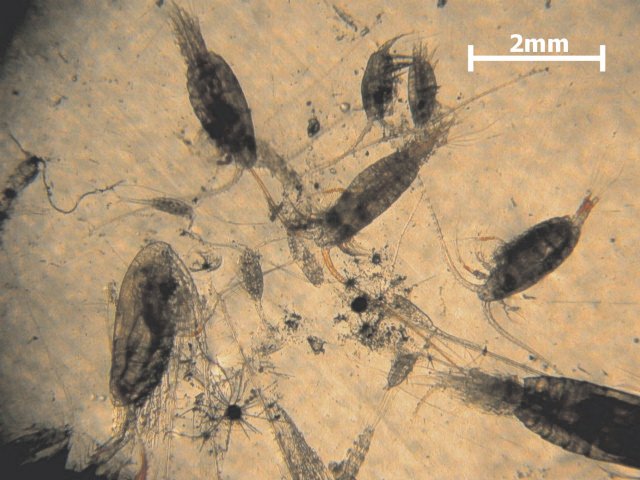Indicators: Zooplankton
What are zooplankton?
Zooplankton are the animals of the planktonic community that live in the water column of oceans, lakes and ponds. In lakes and ponds, the most common zooplankton inhabitants are rotifers, protozoans, and two groups of Crustacea: Cladocera and Copepoda microcrustaceans, that range in size from microns to a few millimeters. Zooplankton are heterotrophic which means that these small organisms obtain nutrients by feeding on other organisms. The zooplankton community is composed of both primary consumers, which eat free-floating phytoplankton (the plants of the planktonic community), and secondary consumers, which feed on other zooplankton.
Why is it important to evaluate zooplankton?

Freshwater zooplankton provide a variety of important ecosystem services. They serve as the main energy pathway from primary producers (phytoplankton) to upper trophic levels (larger invertebrate predators and fish). The zooplankton eat the phytoplankton, such as algae and bacteria, which are then eaten by other zooplankton, insects, and fish. As such, zooplankton play a critical role in maintaining the food web and overall balance of the aquatic ecosystem. Other key roles of zooplankton in ecosystem services include the turnover of nutrients through nutrient recycling, and the control of algal blooms in eutrophic lakes and aquaculture ponds. Because of their critical position in the food web, changes in zooplankton abundance and composition can strongly influence nutrient recycling, water quality, and the growth of phytoplankton, fish and other organisms.
What can zooplankton tell us about the condition of water?
Zooplankton is a diverse group of organisms that respond rapidly to a wide range of natural and human-related disturbances, including eutrophication, organic pollution, and sediment input. Because of these characteristics, zooplankton are often used for assessing environmental disturbances in biological monitoring and assessment programs. Information on the species of zooplankton found in the water, and the abundance of certain species relative to one another, helps scientists assess the effects of environmental disturbances on the biological condition of the water and health of the ecosystem.
How is this indicator used in NARS?
The National Lakes Assessment collects zooplankton data which is available on the NARS data page for these surveys. Below the table you access assessment information in current reports.
| NLA | NRSA | NCCA | NWCA | Indicator Type |
|---|---|---|---|---|
| X | Core Indicator | |||
| Research Indicator |
National Lakes Assessment Web Report – Zooplankton Results
